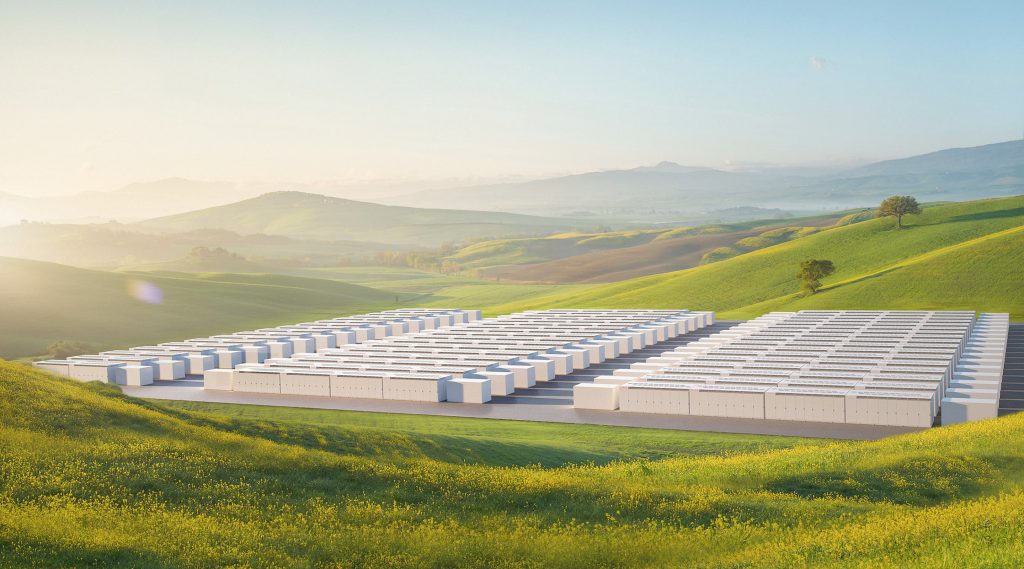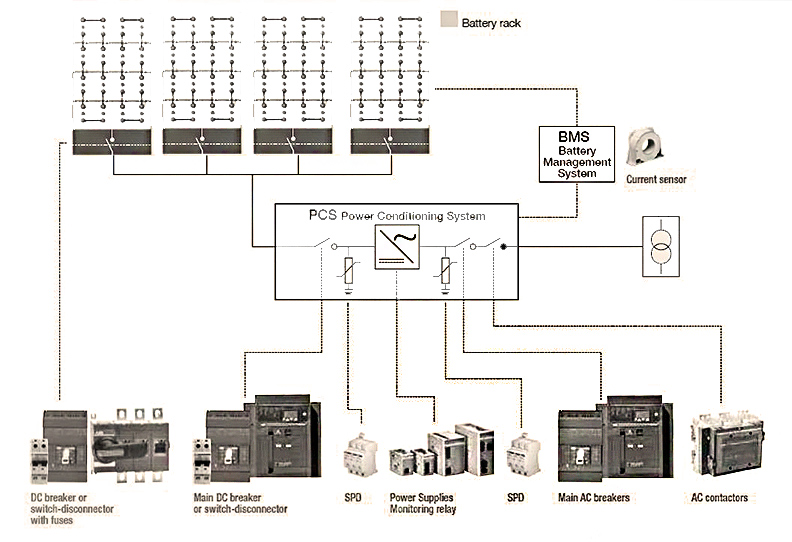Battery and Energy Storage
Energy storage provides a stable supply of power, making operations more efficient, tracked by remote and centralized monitoring.
Diesel and propane generators can now be replaced with reliable and efficient battery storage which can be charged from the grid or through off-grid renewable means, such as wind or solar. Energy storage eliminates the potential damage caused by brownouts and voltage spikes
A battery storage power plant stores electrical energy by using a group of batteries
As of 2019, the maximum power of battery storage power plants is an order of magnitude, less than pumped storage power plants. In terms of storage capacity, the largest battery power plants are approximately two orders of magnitude less than pumped hydro plants. Battery storage power plants are used for short-term peak power and ancillary services, such as providing a frequency-response reserve to minimise the chance of power outages. These battery storage plants can be used to provide energy for homes, offices, battery-operated cars and much more.

Home battery storage allows you to store electricity for use at a later time
Many homes have solar PV panels installed which generate electricity during daylight. They can operate at the grid level, absorbing surplus energy from the grid and then delivering it back when grid demand rises, or they can operate at the individual consumer level, balancing local supply and demand. In either case ,the storage system will reduce peaks and troughs in demand from the grid and help stabilise the supply.
A battery’s round-trip efficiency represents the amount of energy that can be used as a percentage of the amount of energy that it takes to store it. If 5 kWh of electricity goes into a battery, and only 4 kWh gets back, the battery has 80 percent round-trip efficiency (4 kWh / 5 kWh = 80%). A higher round-trip efficiency means you will get more economic value out of a battery.
Energy storage technologies can enable nuclear power plants to follow electricity demand throughout the day and minimise cycling costs. Energy storage technologies facilitate achieving demand-side energy management, bridging the gap present between the power demand and the quality of power supplied and reliability on a long-term basis. Through the amalgamation of energy storage systems, the power and the energy challenges faced by conventional systems can be effectively confronted.
The attractive perspective of energy storage technologies is that they have numerous applications ranging from large-scale generation and transmission-based systems to network distribution systems.
Despite having a variety of energy storage technologies, it can be seen that each storage system performs in a different manner with its inherent storage characteristics.

The interests shown toward the development of energy storage technologies are currently gaining impetus. It is foreseen that the level of storage capacity can be increased by 15–25% in the imminent future in developed countries, and this value may increase in developing nations. By this, the value chain in the electricity industry can be improved to a greater extent.
In the present scenario, pumped hydroelectric storage can be the leading technology compared to other storage systems falling under the category of large-scale energy storage. Stated differently, energy storage enables supply and demand to be balanced even when the generation and consumption of energy do not occur at the same time. Safe Haven Energy are actively researching mobile energy storage with multi-purpose applications which can be used. Safe Haven Energy is also researching balancing supply and demand on an hourly basis on the bulk power system, meeting frequency regulation needs with a second-to-second response, buffering power flows on a distribution feeder from rapid solar fluctuations, and storing energy downstream of capacity-constrained areas to avoid costly infrastructure upgrades.
Battery Storage Systems
It can be seen that each storage system performs in a different manner with its inherent storage characteristics.

Utility Storage System

Battery Storage System
A battery storage power plant stores electrical energy by using a group of batteries
As of 2019, the maximum power of battery storage power plants is an order of magnitude, less than pumped storage power plants. In terms of storage capacity, the largest battery power plants are approximately two orders of magnitude less than pumped hydro plants. Battery storage power plants are used for short-term peak power and ancillary services, such as providing a frequency-response reserve to minimise the chance of power outages. These battery storage plants can be used to provide energy for homes, offices, battery-operated cars and much more.
WANT TO KNOW MORE?
Get in touch using the e-mail address below for more information or to set up a call to discuss our services.
contact@safehavenenergy.nl
contact@safehavenenergy.nl
